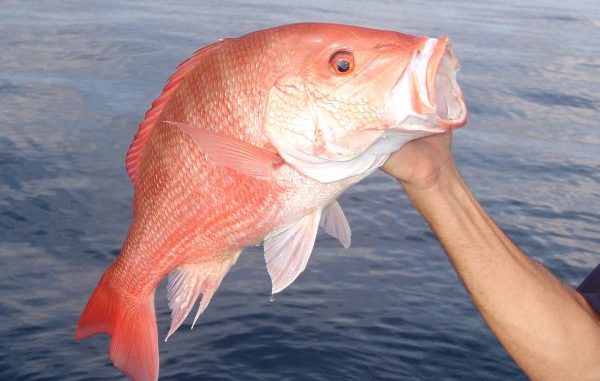
CCA pushes for recreational increase, while Share the Gulf supports maintaining current allocation
The possibility of reallocating the red snapper quota will likely be a hot topic at next week’s Gulf of Mexico Fishery Management Council meeting in New Orleans, although it’s not even officially on the agenda.
The Coastal Conservation Association is in favor of increasing the quota available to recreational fisherman, while Share the Gulf, a coalition of chefs, restaurateurs, seafood businesses and restaurant associations, wants the allocation to remain the same.
Opinions from both sides will likely be heard during the public comment portion of the council agenda, scheduled for next Wednesday, Oct. 30, from 1:30 to 4:30 p.m. in the International Ballroom at the DoubleTree Hotel on Canal Street.
The current allocation, 51-percent to commercial fisherman and 49-percent to recreational anglers, was created in the mid-1980s and remains in use today.
“The allocations as they currently stand are set based on calculations from 30 years ago,” said David Cresson, executive director and CEO of CCA Louisiana. “At the time, really all they did was give a public resource to a small number of commercial fisherman. And that number of commercial fishermen has dwindled over the years to where it stands at less than 400 commercial snapper license holders, while the number of recreational fishermen continues to increase across the Gulf.
“The allocation percentages are based on antiquated data and have been unfair for a long time, but we’re not asking to change that. All we’re asking is if there is some extra, next year or any year, allocate that differently.”
Specifically, two alternatives in Reef Fish Amendment 28 call for increasing the recreational quota only if the total snapper quota is greater than 9.12 million pounds (mp), which according to CCA is the highest harvest of Gulf red snapper ever.
Under the amendment, if the quota for a particular year is at 9.12 mp or less, the current allocation of 51-percent to commercial and 49-percent to recreational would remain in force.
But in the event the snapper quota is greater than 9.12 mp, Alternative 5 allocates 75-percent of the increase to the recreational sector with the remaining 25-percent going to the commercial sector. (Based on a red snapper quota of 11 mp, this scenario would provide 5.121 mp to the commercial fishermen and 5.879 mp to the recreational side, according to figures provided by CCA.)
Alternative 6 would allocate 100-percent of the quota above 9.12 mp to the recreational sector. (Based on a red snapper quota of 11 mp, the commercial sector would receive 4.651 mp and the recreational fishermen would receive 6.349 mp, according to CCA.)
To view a blog post from CCA on all alternatives related to Reef Fish Amendment 28, click here.
Cresson urged recreational red snapper fisherman to attend the public comment session to voice their concerns.
“I can assure you this: the people that disagree with us and who are not on the side of the recreational fisherman will certainly be there,” Cresson said. “So it’s imperative that recreational fishermen come out and have their voice heard during the public comment period.”
Stan Harris, president and CEO of the Louisiana Restaurant Association and Louisiana co-chair of Share the Gulf, was traveling and could not be reached for comment.
But in the CEO’s Message section of the Louisiana Restaurant Associations’s Web site, Harris writes, “Of late, red snapper has been the focus of much dialogue, as there are some interests working to tilt the current allocation of red snapper (51-percent commercial, 49-percent recreational) more to the recreational fishermen. As an industry, we cannot support this modification.”
He concludes, “The coalition will press decision makers to keep sustainably caught Gulf seafood on the table for millions of Americans who don’t fish or own their own boat.”
Since the proposed increases in Alternative 5 and 6 in the amendment only affects the quota beyond 9.12 mp, Cresson said the commercial sector wouldn’t actually be losing anything.
“We’re only talking about anything over and above the historic high,” he said. “This is a propaganda campaign aimed at pointing the blame squarely on the recreational fisherman for the absolute mess that is the federal red snapper fishery and its management.”
But more than 100 chefs and restaurateurs from across the Gulf states, including several from New Orleans and throughout Louisiana, along with numerous fishermen and seafood-related businesses, are named as supporters on Share the Gulf’s site.
Cresson said he was surprised because many of those same Louisiana chefs and restaurant owners listed are ardent outdoorsmen and avid fishermen.
“I don’t know if they understand the ramification of 3.2 million recreational fishermen in the Gulf being upset,” Cresson said. “We’re not to that point yet, but we’d certainly like to tell the story of the recreational angler to those same restaurateurs and chefs and have them see both sides of it.”


